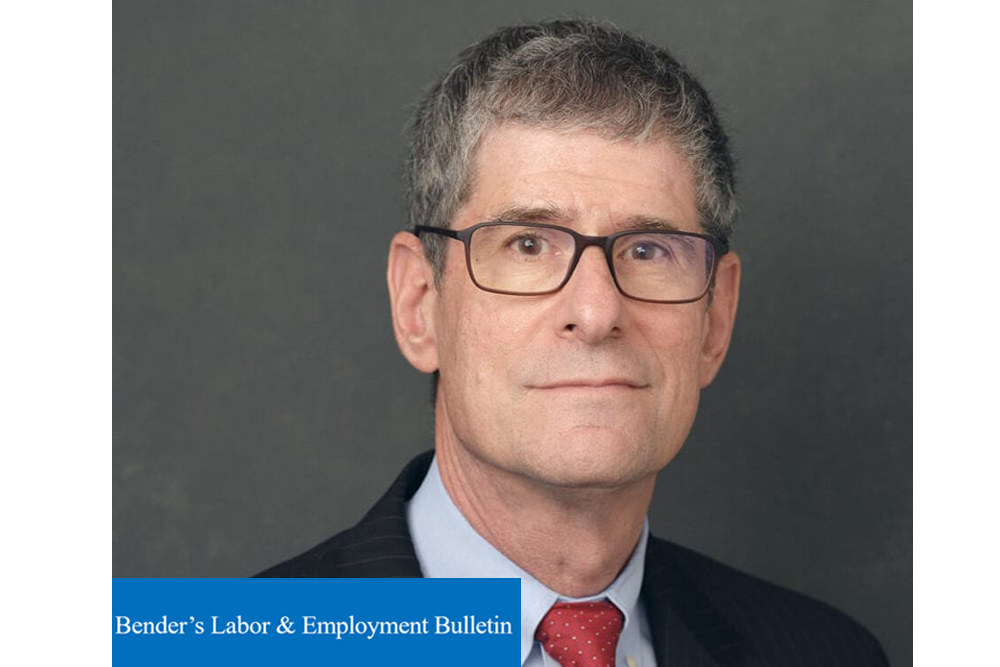Table of Contents
Introduction
All civil actions brought in the federal courts are governed by the Federal Rules of Civil Procedure [1] For decades, though, courts have fashioned unique civil procedures for ERISA cases that have limited the availability of trials, the right of litigants to take discovery, and courts have even created a means of disposing of litigation that deviates from the requirement that courts are to issue final judgments of conclusive character.[2] Such departures from normal civil procedure are not derived from the ERISA statute, which says nothing about such procedures. Instead, ERISA authorizes aggrieved benefit claimants to bring a “civil action” to recover benefits claimed to be due, [3] which means the Federal Rules of Civil Procedure should govern the adjudication of ERISA benefit claim disputes.
For many years, I have written extensively on the subject of ERISA civil procedure,[4] but until recently, courts have paid scant attention. However, in a series of recent rulings, mostly emanating from the U.S. Court of Appeals for the Sixth Circuit, courts have begun to question why ERISA civil procedure differs from civil procedures applied in all other civil actions heard in the federal courts. This article will outline several of the court-created problems with ERISA litigation and discuss what courts have begun to observe and point out, as well as discuss where this all may be headed.
The Problem
The difference between how courts decide ERISA cases and other civil actions has led courts to recently ask the following questions:
- Why do most courts except for the Seventh Circuit [5] refuse to even hold trials in ERISA cases and deem such matters record review proceedings?
- What does “substantial evidence” mean in the context of deferential review of ERISA claim decisions? [6]
- Why are jury trials disallowed in ERISA denialof-benefits cases? [7]
- What basis do courts have for deviating from normal summary judgment rules in ERISA cases? [8]
- Is there any justification for remands of ERISA cases to plan administrators and insurers?
The ERISA Quasi-Administrative Law Paradigm
Instead of trials, most courts adjudicate ERISA cases as record-review proceedings. [9] The U.S. Court of Appeals for the Third Circuit maintained in Noga v. Fulton Fin. Corp. Empl. Benefit Plan [10] that courts had license to adopt quasi-administrative law procedures “pursuant to their ability to develop federal common law for ERISA regulated plans.” [11] However, a judge who was recently appointed to the Sixth Circuit strenuously disagreed.
In Tranbarger v. Lincoln Life & Annuity Co. [12], Judge John Nalbandian issued a concurring opinion raising his concerns about the use of an administrative law paradigm in ERISA benefits litigation. He began by citing Section 502 of the ERISA statute, which authorizes an aggrieved claimant to bring a “civil action” to seek benefits due under the terms of the plan, enforce rights under the plan terms, or to clarify rights. [13] Finding the term “civil action” is a term of art, consistent with Rule 1 of the Federal Rules of Civil Procedure which states the Rules apply to all civil actions brought in federal courts, Nalbandian wrote that “by negative implication, the Federal Rules should apply to ERISA civil actions,” [14] which would mean that ERISA litigants should have the right to take discovery pursuant to Rule 26, move for summary judgment, if appropriate, under Rule 56, and conduct trials.
The Tranbarger concurrence traced the history of how ERISA litigation separated itself from other federal civil cases, pointing to Perry v. Simplicity Engineering,[15] where the Sixth Circuit maintained that in ERISA benefit cases, the court is to only consider the so-called “administrative” record and deny parties the right to submit further evidence. Perry’s rationale for adopting a record-review regime was its concern that courts should not become substitute plan administrations. However, as Judge Nalbandian pointed out, Perry “failed to consider the text of the statute—the only clear indication of what Congress wanted.” [16] He added, “Section 1132 refers to ‘civil actions’—a term that necessarily incorporates the Federal Rules of Civil Procedure and the introduction of evidence like in any other case. See Fed. R. Civ. P. 1. But Perry chose intent over the clear text.”
Worsening what Perry began, Judge Nalbandian cited a later Sixth Circuit case, Wilkins v. Baptist Healthcare System, Inc. [17] where the court fashioned a “special rule” on how to adjudicate ERISA cases after finding that neither summary judgment (Rule 56) or a bench trial (Rule 52) would be consistent with Perry. On that point, Judge Nalbandian observed: “Our approach, which eschews both Rule 56 and Rule 52, rejects the application
of the Federal Rules of Civil Procedure to § 1132’s ‘civil action.’”[18]
Although the Third Circuit’s Noga decision was not cited, Judge Nalbandian found guidance in the Supreme Court’s recent decision, in United States v. Tsarnaev,[19] which held that courts lacked the authority to establish rules which conflict with or contravene statutes or constitutional provisions. Hence, Judge Nalbandian concluded, “Bottom line, Tsarnaev prevents lower courts from creating prophylactic rules that contradict federal statutes or rules like the Federal Rules of Civil Procedure.” [20]
The concurrence also noted the problem may also have been the result of the Firestone Tire & Rubber Co. v. Bruch [21] ruling. Judge Nalbandian explained that because the Supreme Court’s decision permitted two standards of judicial review in ERISA cases (de novo and abuse of discretion), Firestone may have implicitly “endors[ed] a quasi-administrative-law review regime for a ‘civil action’ under § 1132” [22] by permitting courts to develop “a federal common law of rights and obligations under ERISAregulated plans.” [23] The concurrence questioned whether that was the Court’s intent, though.
What Judge Nalbandian left out of his concurrence is that the Supreme Court has repeatedly defined the meaning of the term “civil action.” In every instance where the Court was called upon to determine what Congress meant when it authorized aggrieved parties to bring a “civil action,” [24] the Supreme Court has steadfastly maintained the term “civil action” denotes a plenary proceeding in which testimony is taken and evidence presented rather than a file-review proceeding. Consistent with the Supreme Court’s view as to the meaning of the term “civil action,” in Krolnik v. Prudential Ins. Co., [25] the U.S. Court of Appeals for the Seventh Circuit determined that the term de novo “review” in ERISA cases does not mean a record review; instead, what this required is that a trial be held. To date, though, only the Seventh Circuit has adopted that view.
Substantial Evidence
Continuing on the same theme, when ERISA claims are reviewed deferentially under a standard of judicial review that is interchangeably known as abuse of discretion or arbitrary and capricious, [26] courts examine the record as they would do in an administrative review proceeding [27] to determine whether the decision is supported by substantial evidence. But what does “substantial evidence” mean? In Michael J.P. v. Blue Cross & Blue Shield of Texas, [28] a concurring opinion authored by Judge Andrew Oldham in a case involving a health insurance denial questioned how courts are defining the meaning of that phrase in ERISA cases, and observed that ERISA’s “‘substantial evidence’ is radically different” how that term is used elsewhere. [29] Specifically, in Universal Camera Corp. v. NLRB [30] the case Judge Oldham described as the Supreme Court’s “canonical substantial-evidence case,” the Court rejected an interpretation of the meaning of substantial evidence that would uphold an administrative ruling so long as there was any reliable evidence in the record supporting the outcome. Instead, Universal Camera held that a more “holistic” evaluation of the outcome was necessary, which required courts to “give serious consideration to ‘the record as a whole,’ ‘taking into account contradictory evidence or evidence from which conflicting inferences could be drawn.’” [31] Contrary to that view, Judge Oldham complained that in ERISA cases the courts often decline to engage in a holistic review of the evidence, because we can readily find that there is some—”more than a scintilla” even if “less than a preponderance,” ibid.—evidence that supports the administrator’s decision. And once we conclude that the evidence meets this low “substantial evidence” threshold we need not consider how substantial the plaintiff’s evidence is, because it doesn’t matter — the administrator has carried their burden. [32] Judge Oldham found that approach problematic, pointing out:
In practice, any plan administrator in any case will point to some quantum of evidence which arguably puts their decision on at least the “low end” of a reasonableness spectrum. So in almost every case, we quickly approve the administrator’s decision as supported by substantial evidence, without “taking into account contradictory evidence or evidence from which conflicting inferences could be drawn.” [33]
The consequence of courts taking such an approach is that it “makes it particularly difficult for ERISA beneficiaries to vindicate their rights under the cause of action created by Congress. And it does so with no apparent support in law, logic, or history.” [34]
Nor is Judge Oldham the only jurist who recognizes the importance of Universal Camera. Justice Stephen Breyer also pointed to Universal Camera as a guide to deciding ERISA cases under a deferential review standard. In Metro. Life Ins. Co. v. Glenn, [35] which ruled that when deciding ERISA benefit cases, courts must consider the structural conflict faced by ERISA plan administrators when the same entity decides claimants’ eligibility to receive benefits and also serves as the funding source for the benefit payments. By citing Universal Camera in the majority opinion, Justice Breyer sought to remind courts of what that case held and strongly suggested that the meaning of the term “substantial evidence” should apply across the board to ERISA cases as well. In Universal Camera, the Court made the following observation which logically applies equally to ERISA plan administrators:
[C]ourts must now assume more responsibility for the reasonableness and fairness of Labor Board decisions than some courts have shown in the past. Reviewing courts must be influenced by a feeling that they are not to abdicate the conventional judicial function. Congress has imposed on them responsibility for assuring that the Board keeps within reasonable grounds. That responsibility is not less real because it is limited to enforcing the requirement that evidence appear substantial when viewed, on the record as a whole, by courts invested with the authority and enjoying the prestige of the Courts of Appeals. The Board’s findings are entitled to respect; but they must nonetheless be set aside when the record before a Court of Appeals clearly precludes the Board’s decision from being justified by a fair estimate of the worth of the testimony of witnesses or its informed judgment on matters within its special competence or both.
Thus, courts need to be mindful that the ERISA law was enacted for the benefit of and to protect the rights of plan participants. [36] Too much deference to decisions made by plan administrators would be contrary to and would defeat Congress’ intent.
Jury Trials
Another puzzling aspect of ERISA litigation is that claimants cannot get jury trials. However, despite cases such as cited Daniel v. Eaton Corp., [37] which squarely held that “in actions for recovery of benefits under section 502, there is no right to a jury trial,” a more recent unpublished ruling from the same circuit, In re Caudill, [38] questioned the basis for prohibiting jury trials.
The rationale given for denying jury trials in ERISA cases is an assertion by the courts that ERISA cases are equitable in nature. However, numerous courts have described benefit claims as contractual. [39] That being the case, in actions for breach of contract which seek a contractual remedy; i.e., the payment of benefits due under the terms of an employee benefit plan, the Seventh Amendment to the U.S. Constitution grants the right to trial by jury according to the Supreme Court’s ruling in Chauffeurs, Teamsters & Helpers, Local No. 391 v. Terry. [40]
Early ERISA cases found that ERISA benefit claimants had the right to jury trials. In Stamps v. Michigan Teamsters Joint Council No. 43, [41] a district court held that benefit claimants were entitled to jury trials, reasoning that the ERISA law’s distinction between fiduciary breach claims and actions seeking benefits claimed to be due proved the latter were contractual. The court observed that “[i]f the court construed subsection (a)(1)(B) to also create a cause of action for equitable relief, it would be superfluous to subsection (a)(3).” [42]
Thus, while there is no explicit provision in the ERISA law statute providing for jury trials, nothing in either the law or its statutory history suggests that jury trials are excluded.
Summary Judgment
Yet another significant ERISA deviation from regular federal civil procedure is summary judgment. Rule 56 of the Federal Rules of Civil Procedure43 states that summary judgment is permitted only “if the movant shows that there is no genuine dispute as to any material fact and the movant is entitled to judgment as a matter of law.”
Notwithstanding the explicit language of the Rule, several federal appellate courts have created their own version of summary judgment applicable solely to ERISA cases, claiming that “summary judgment is simply a vehicle for deciding the [benefits] issue” and “the non-moving party is not entitled to the usual inferences in its favor.” [44] Recently, though, the Fourth Circuit rejected that view in Tekmen v. Reliance Standard Life Insurance Company, [45] a case involving ERISA-governed long-term disability benefits that was resolved in the district court as a bench trial on the record pursuant to Federal Rule of Civil Procedure 52.
The defendant argued that the district court had erred and should have decided the case on summary judgment, which would have led to a de novo standard of appellate review, rather than the clear error standard dictated by Rule 52. The Fourth Circuit rejected that argument, finding traditional summary judgment would have been improper since the court would need to find the absence of any material issues of fact and to construe inferences in favor of the non-moving party. [46] Although the First Circuit’s rationale for rejecting traditional summary judgment norms is that there are “no disputed issues of fact for the court to resolve” when an ERISA case is decided on a claim record, [47] the Fourth Circuit disagreed, noting:
Where, as here, the district court is faced with directly at-odds contentions regarding whether the individual’s claimed impairment is genuine, we see no alternative to the district court making findings of fact. And where such findings implicate material issues, summary judgment simply is not appropriate. [48] The court thus deemed the approach to summary judgment taken by other circuits as “a solution in search of a problem,” [49] adding that “in the context of de novo review of ERISA denial-of-benefits cases as in any other context, district courts should employ the appropriate procedural mechanism for resolving the case before them as defined by the Federal Rules of Civil Procedure.” [50]
Just as Tranbarger questioned the authority of federal courts to deviate from the Federal Rules of Civil Procedure, Tekmen took the same approach. Neither ruling cited the Rules Enabling Act, 28 U.S.C. § 2072(b), which states that upon enactment of federal rules of procedure, any “laws in conflict with such rules shall be of no further force or effect after such rules have taken effect.” That law was applied to ERISA cases in Verkuilen v. South Shore Bldg., [51] which observed, “That statute [ERISA] may be comprehensive, but it does not take over the field of civil litigation and oust rules adopted under the Rules Enabling Act.” Thus, just as athletes are coached in the “fundamentals” of their sport, applying civil procedure fundamentals in ERISA litigation is equally important. The ruling in Tekmen performed a valuable service by pointing out how the meaning of summary judgment has been distorted in ERISA litigation. The issuance of Tekmen represents progress in restoring civil procedure norms in ERISA litigation.
Remands
Finally, what may be the most peculiar aspect of ERISA litigation is the practice of courts “remanding” benefit cases to the plan administrator for a do-over. [52] A concurring opinion written by Judge Eric Murphy of the U.S. Court of Appeals for the Sixth Circuit in Card v. Principal Life Ins. Co. [53] may hasten the end of that practice. Judge Murphy began his concurring opinion by asking two questions:
Why do courts have any power to “remand” a pending federal lawsuit to one of the private litigants? That strikes me as quite an unusual thing. Why shouldn’t the district courts instead oversee any additional litigation compelled by an arbitrary-and-capricious finding using the normal rules of civil procedure? [54]
Judge Murphy acknowledged that courts have assumed the existence of a “remand” power in ERISA cases, but the Supreme Court has never addressed the issue, and no court has ever explained the authority permitting courts to remand ERISA cases. The ERISA statute certainly says nothing about remands; and the Supreme Court has repeatedly held that courts may not create additional remedies or requirements into the ERISA statute that are not explicitly enumerated in the text of the law. [55] Judge Murphy also questioned remands since the majority of federal circuit courts have held that remand orders by district courts are not final orders and are therefore unappealable. [56]
Absent a statutory basis for remands Judge Murphy concluded that the practice of remanding ERISA cases “seem to rest on paper-thin reasoning” and pointed out that courts have “largely assumed its existence without addressing the subject in detail.” [57] Nor was the concurrence able to identify any other area of federal practice that permitted remands to private litigants. [58] The concurring opinion thus concluded as follows:
In short, I tend to think that the existing caselaw has not adequately justified what seems to me to be a strange procedure—remanding a case to a private litigant for further proceedings rather than completing those proceedings in the court. And if plan administrators ultimately cannot ground this procedure in ERISA’s text as interpreted against its historical context, I find it difficult to believe that the Supreme Court would sanction it. Because it is well established in this circuit, though, I concur in the majority opinion explaining how it should be implemented. [59]
The Sixth Circuit is not alone in questioning remands of ERISA cases. In Mead v. Reliastar Life Ins. Co., [60] the Second Circuit also questioned the absence in the ERISA statute of any support for remands. The court compared 29 U.S.C. § 1132(a), the statutory provision granting aggrieved claimants the right to bring a civil action, with 42 U.S.C. § 405(g), which allows Social Security claimants whose benefits have been denied the right to seek judicial review. In the latter situation, the power to remand is stated explicitly in the statute. [61]
Conclusion
The discussion above highlights many of the significant ways in which ERISA litigation has deviated from other forms of federal civil litigation. Instead of conducting ERISA litigation under the rubric of the Federal Rules of Civil Procedure, courts have created a sui generis set of ad hoc rules that have now been in place for decades. Until recently, other than legal commentators, no court has challenged the peculiarities of ERISA litigation or even questioned the procedures developed by the courts that are unique to ERISA litigation. Surely, the viewpoint expressed in Noga v. Fulton Financial [62] that courts have the power to fashion procedures based on the Supreme Court’s encouragement [63] to courts to create a “federal common law of rights and obligations under ERISA-regulated plans” was not a license to deviate from the civil procedure Rules. The Rules Enabling Act and other Supreme Court authority cited in this article forbid courts to develop or follow deviant procedures. ERISA cases that have reached the Supreme Court have also condemned adding rights and remedies not enumerated in the statutory text. [64]
Judges Murphy and Nalbandian from the Sixth Circuit have the better view on this issue; however, neither the Sixth Circuit, nor any other Circuit, has yet to issue a definitive ruling on any of the issues discussed above. However, now that a discussion has begun, it is reasonable to expect that future cases will turn the tide and restore ERISA litigation to civil procedure norms. Ultimately, the Supreme Court is likely going to need to step in to address these issues. Perhaps the Court will find that too much water has already gone over the dam and will amend the Federal Rules of Civil Procedure to codify what the courts have done. But that seems unlikely given the length of time the Rules have been in effect, as well as the guiding principle set forth in Rule 2 that there is only one form of civil action. Consequently, since the first words of ERISA § 502(a) [65] are “[a] civil action may be brought,” the courts need to conform the procedures used to adjudicate ERISA cases to the time-worn and well-established Rules contained in the Federal Rules of Civil Procedure.
Mark DeBofsky is a shareholder at DeBofsky Law Ltd.
This article was published by Bender’s Labor & Employment Bulletin on October, 2023. Volume 23 • Issue No. 10
1 Federal Rules of Civil Procedure 1 and 2.
2 See Aetna Life Ins. Co. v. Haworth, 300 U.S. 227, 241 (1937).
3 29 U.S.C. § 1132(a)(1)(B).
4 See, e.g., Mark D. DeBofsky, A Critical Appraisal of the Current State of ERISA Civil Procedure, 18 Emp. Rts. & Emp. Pol’y J. 203, 233–34 (2014).
5 See Krolnik v. Prudential Insur. Co., 570 F.3d 841 (7th Cir. 2009).
6 See DeBofsky, “5th Circ. Opinion is Right to Question ERISA Review Norms,” Law360 (Oct. 5, 2021).
7 The Sixth Circuit has opened a dialogue on the jury trial issue. See DeBofsky, “Benefits Ruling Raises Jury Trial Question for ERISA Cases,” Law 360 (Sept. 24, 2021).
8 Before a court is permitted to enter summary judgment in favor of one of the litigants, Rule 56 of the Federal Rules of Civil Procedure requires the absence of any genuine issue of material fact; however, in ERISA cases, courts have disregarded that requirement. See Gross v. Sun Life Assur. Co. of Canada, 734 F.3d 1, 16017 (1st Cir. 2013) (describing “summary judgment” as “simply a vehicle for deciding the issue”); LaAsmar v. Phelps Dodge Corp. Life, Accidental Death & Dismemberment & Dependent Life Ins. Plan, 605 F.3d 789 (10th Cir. 2010) (same).
9 See DeBofsky, The Paradox of the Misuse of Administrative Law in ERISA Benefit Claims, 37 J. MARSHALL L. REV. 727, 730 (2004) (arguing that administrative law type adjudications of ERISA claims is improper).
10 Noga v. Fulton Fin. Corp. Empl. Benefit Plan, 19 F.3d 264, 273 (3d Cir. 2021).
11 Citing Firestone Tire & Rubber Co. v. Bruch, 489 U.S. 101, 110 (1989).
12 Tranbarger v. Lincoln Life & Annuity Co., 68 F.4th 311 (6th Cir. 2023).
13 29 U.S.C. § 1132(a)(1)(B).
14 68 F.4th at 320.
15 Perry v. Simplicity Eng’g, 900 F.2d 963, 966 (6th Cir. 1990).
16 68 F.4th at 321.
17 Wilkins v. Baptist Healthcare System, Inc., 150 F.3d 609 (6th Cir. 1998)
18 68 F.4th at 322.
19 United States v. Tsarnaev, 142 S. Ct. 1024, 212 L. Ed. 2d 140 (2022).
20 68 F.4th at 322.
21 Firestone Tire & Rubber Co. v. Bruch, 489 U.S. 101 (1989).
22 68 F.4th at 322.
23 489 U.S. at 110.
24 See, e.g., United States v. First City National Bank, 386 U.S. 361, 368 (1967); Chandler v. Roudebush, 425 U.S. 840 (1976); and Kappos v. Hyatt, 566 U.S. 431 (2012). Also see, DeBofsky, “Benefits Ruling Shows Need for Revised ERISA Procedure,” Law360 (December 1, 2022); DeBofsky, “A Critical Appraisal of the Current State of ERISA Civil Procedure – An Examination of How Courts Treat “Civil Actions” Brought Under the Employee Retirement Income Security Act,” 18 Empl. Rights & Empl. Policy J. 203 (2014).
25 Krolnik v. Prudential Ins. Co., 570 F.3d 841 (7th Cir. 2009).
26 See Ross v. Indiana State Teacher’s Assn. Ins. Trust, 159 F.3d 1001, 1008-09 (7th Cir. 1998). But see Kathryn J. Kennedy, Judicial Standard of Review in ERISA Benefit Claim Cases, 50 Am. U.L. Rev. 1083, 1096-1107 (2001) (discussing the various standards of review applied to ERISA claims and the distinction between abuse of discretion and arbitrary and capricious).
27 See, e.g., 42 U.S.C. § 405(g) (applying the substantial evidence standard to judicial reviews of Social Security benefit denials).
28 Michael J. P. v. Blue Cross and Blue Shield of Texas, 2021 U.S. App. LEXIS 28704 (5th Cir. Sept. 22, 2021) (non-precedential).
29 2021 U.S. App. LEXIS 28704 at *24.
30 340 U.S. 474, 71 S. Ct. 456, 95 L. Ed. 456 (1951).
31 2021 U.S. App. LEXIS 28704 at * 25 (citing Universal Camera at 487, 490; accord Dish Network Corp. v. NLRB, 953 F.3d 370, 377-78 (5th Cir. 2020)).
32 2021 U.S. App. LEXIS 28704 at *26.
33 2021 U.S. App. LEXIS 28704 at *26, citing Universal Camera, 340 U.S. at 487
34 2021 U.S. App. LEXIS 28704 at *27.
35 554 U.S. 105 (2008).
36 See 29 U.S.C. § 1001(b): It is hereby declared to be the policy of this chapter to protect interstate commerce and the interests of participants in employee benefit plans and their beneficiaries, by requiring the disclosure and reporting to participants and beneficiaries of financial and other information with respect thereto, by establishing standards of conduct, responsibility, and obligation for fiduciaries of employee benefit plans, and by providing for appropriate remedies, sanctions, and ready access to the Federal courts.
37 Daniel v. Eaton Corp., 839 F.3d 263, 268 (6th Cir. 1988).
38 In re Caudill, 2020 U.S. App. LEXIS 34464 (6th Cir. Oct. 30, 2020) (unpublished).
39 See Larson v. United Healthcare Ins. Co., 723 F.3d 905, 911 (7th Cir. 2013), which pronounced: An ERISA § 502(a)(1)(B) claim is “essentially a contract remedy under the terms of the plan.” The Supreme Court has explained that the remedy provided in § 1132(a)(1)(B) is designed “to protect contractually defined benefits,” and in keeping with its contract-law foundations, the cause of action offers typical contract forms of relief, including recovery of benefits accrued or otherwise due, declaratory judgments to clarify plan benefits, and injunctions against future denial of benefits. The claim is governed by a federal common law of contract keyed to the policies codified in ERISA.
40 Chauffeurs, Teamsters & Helpers, Local No. 391 v. Terry, 494 U.S. 558, 564-65 (1990).
41 Stamps v. Michigan Teamsters Joint Council No.
43, 431 F. Supp. 745 (E.D. Mich. 1977).
42 431 F. Supp. at 747.
43 Fed. R. Civ. P. 56.
44 See Orndorf v. Paul Revere Life Ins. Co., 404 F.3d 510, 517 (1st Cir. 2005) and LaAsmar v. Phelps Dodge Corp. Life, Accidental Death & Dismemberment & Dependent Life Ins. Plan, 605 F.3d 789, 795–96 (10th Cir. 2010) which have used the term “summary judgment” but explained that the summary judgment procedure in ERISA cases differs from ordinary summary judgment. The Sixth Circuit takes the view that neither summary judgment nor a bench trial should be used; and that “an alternative form of review unique to ERISA cases” should be utilized. Wilkins v. Baptist Healthcare Sys., Inc., 150 F.3d 609, 618–19 (6th Cir. 1998).
45 Tekmen v. Reliance Standard Life Ins. Co., 55 F.4th 951 (4th Cir. 2022).
46 See Anderson v. Liberty Lobby, Inc., 477 U.S. 242, 252, 106 S.Ct. 2505, 91 L.Ed.2d 202 (1986).
47 Orndorf, 404 F.3d at 518.
48 55 F.4th at 961.
49 55 F.4th at 961.
50 55 F.4th at 961.
51 Verkuilen v. South Shore Bldg., 122 F.3d 410, 411 (7th Cir. 1997).
52 See DeBofsky, “10th Circ. Remand of ERISA Claims to Insurer Is Problematic,” Law360 (Aug. 25,2023).
53 Card v. Principal Life Ins. Co, 17 F.4th 620 (6th Cir. 2021) (Murphy, J., concurring); see also DeBofsky, “6th Circ. ERISA ruling Highlights Dubious Court Practice,” Law360 (Nov. 16, 2021).
54 17 F.4th at 626.
55 17 F.4th at 628 (citing Great-West Life & Annuity Ins. Co. v. Knudson, 534 U.S. 204, 209, 122 S.Ct. 708, 151 L.Ed.2d 635 (2002) (quoting Mass. Mut. Life Ins. Co. v. Russell, 473 U.S. 134, 147, 105 S.Ct. 3085, 87 L.Ed.2d 96 (1985)).
56 17 F.4th at 628 (citing Bowers v. Sheet Metal Workers’ Nat’l Pension Fund, 365 F.3d 535, 537 (6th Cir. 2004)).
57 17 F.4th at 628.
58 17 F.4th at 627 (citing Perlman v. Swiss Bank Corp. Comp. Disability Prot. Plan, 195 F.3d 975, 978 (7th Cir. 1999) (“it is doubtful as an original matter that a district court may ‘remand’ ERISA claims as if to administrative agencies”)).
59 17 F.4th at 629.
60 Mead v. Reliastar Life Ins. Co., 768 F.3d 102 (2d Cir. 2014).
61 768 F.3d at 112.
62 Supra. at n. 9.
63 Pilot Life Ins. Co. v. Dedeaux, 481 U.S. 41, 56 (1987); also see, Firestone Tire & Rubber Co. v. Bruch, 489 U.S. 101, 110 (1989).
64 481 U.S. at 56.
65 29 U.S.C. § 1132(a).







